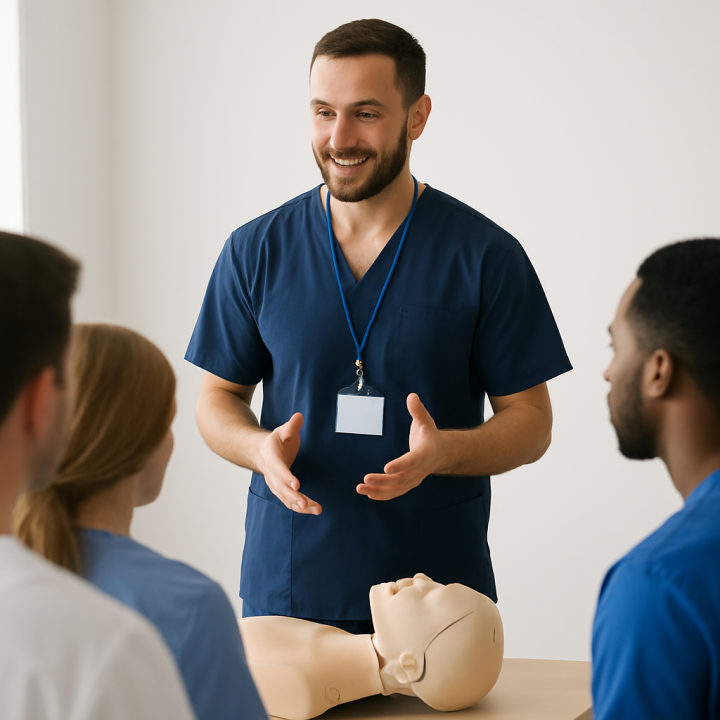Behind every confident healthcare professional trained in life-saving techniques, there’s an exceptional instructor who made the lessons stick. Teaching BLS (Basic Life Support) and ACLS (Advanced Cardiovascular Life Support) is more than just running through slides or practicing compressions—it’s about shaping the skills and mindset needed to respond effectively in a crisis. So, what separates a good instructor from a great one?
1. Deep Clinical Knowledge
A great instructor not only knows the algorithms but also understands the clinical reasoning behind them. They can explain why certain actions are prioritized and how interventions impact patient outcomes. This depth of understanding helps students grasp the “why” behind each step.
2. Strong Communication Skills
Clear, concise communication is key. The best instructors can break down complex concepts into simple, memorable lessons. They know when to talk and when to let students practice. They create a supportive learning environment where students feel comfortable asking questions.
3. Passion for Teaching
Passion is contagious. Great instructors genuinely care about helping others learn and improve. Their enthusiasm motivates students, builds confidence, and makes learning an enjoyable experience.
4. Real-World Experience
Instructors with real-world clinical experience can share practical tips and stories that resonate with students. They can relate the course material to real-life scenarios, giving students a deeper appreciation for its importance.
5. Adaptability
No two classes—or students—are the same. A great instructor adapts their teaching style to fit the group, offering extra support where needed and challenging more experienced students to refine their skills further.
6. Commitment to Ongoing Learning
Medicine evolves, and so should instructors. The best stay updated with the latest guidelines and research and continuously refine their teaching methods to provide the best learning experience.
Conclusion
Being a great BLS/ACLS instructor isn’t just about passing along information. It’s about inspiring, mentoring, and equipping healthcare professionals to act swiftly and effectively when every second counts. When instructors bring expertise, passion, and adaptability to the classroom, they leave a lasting impact—on their students and the patients those students will one day save.


